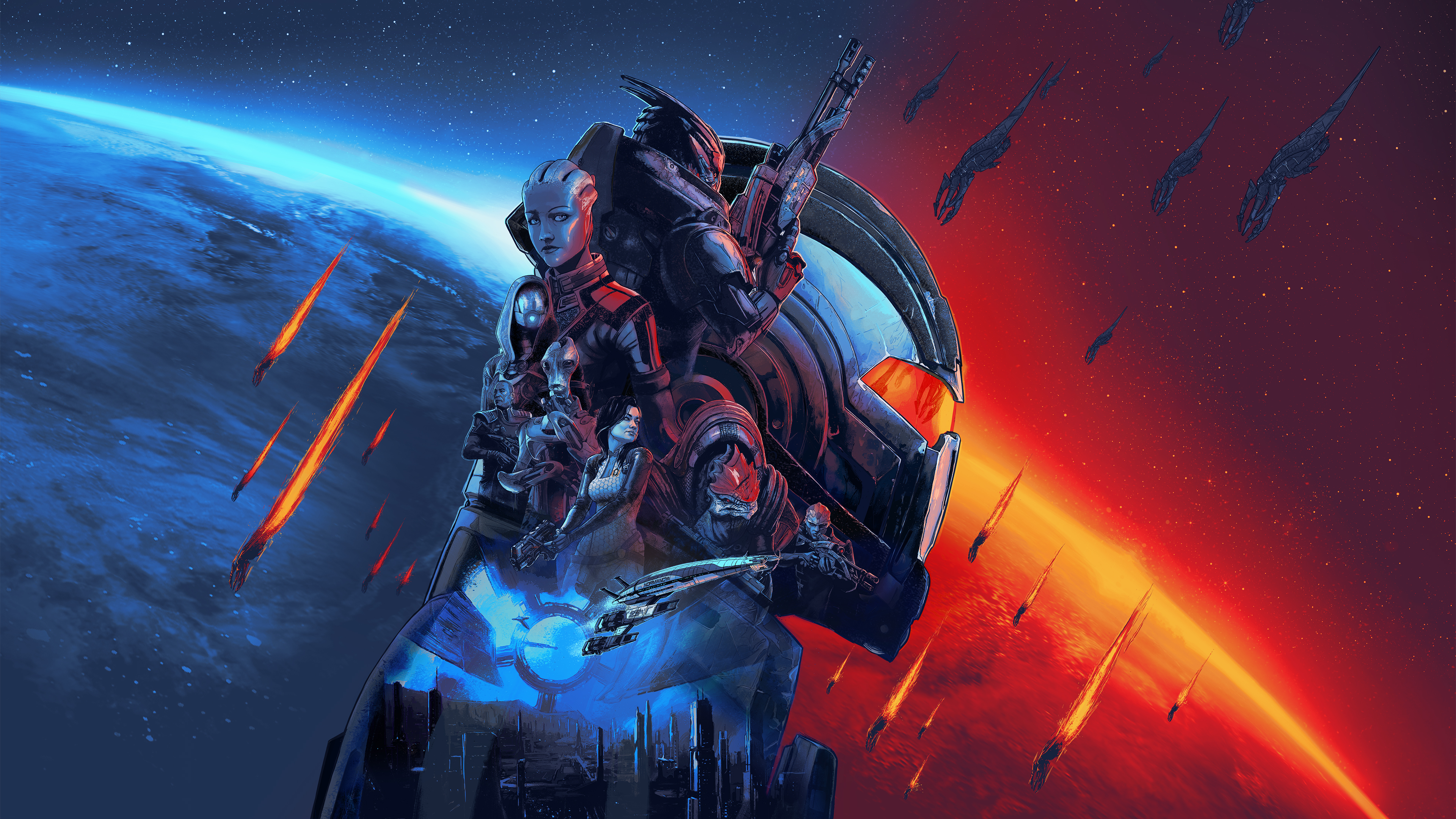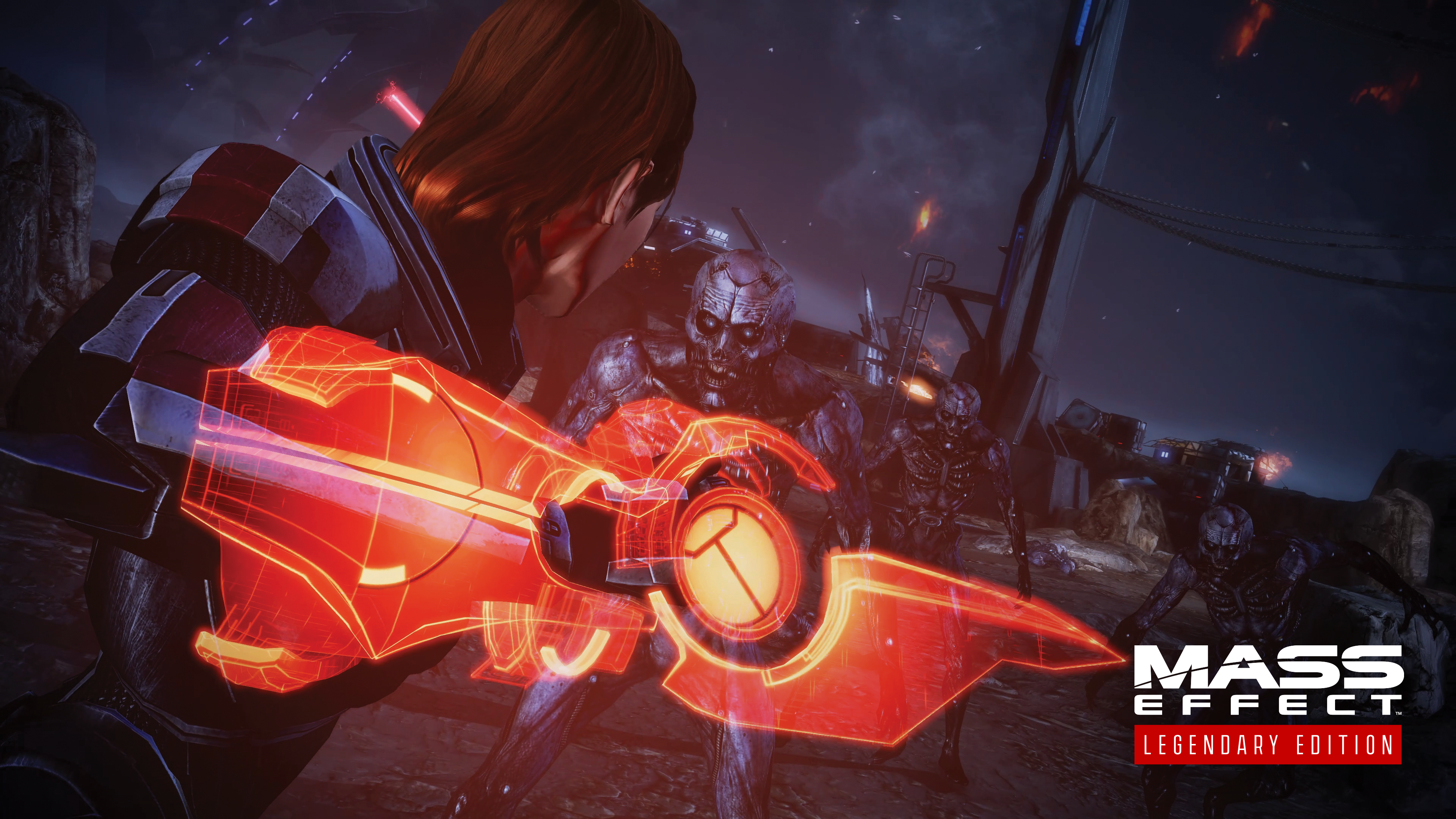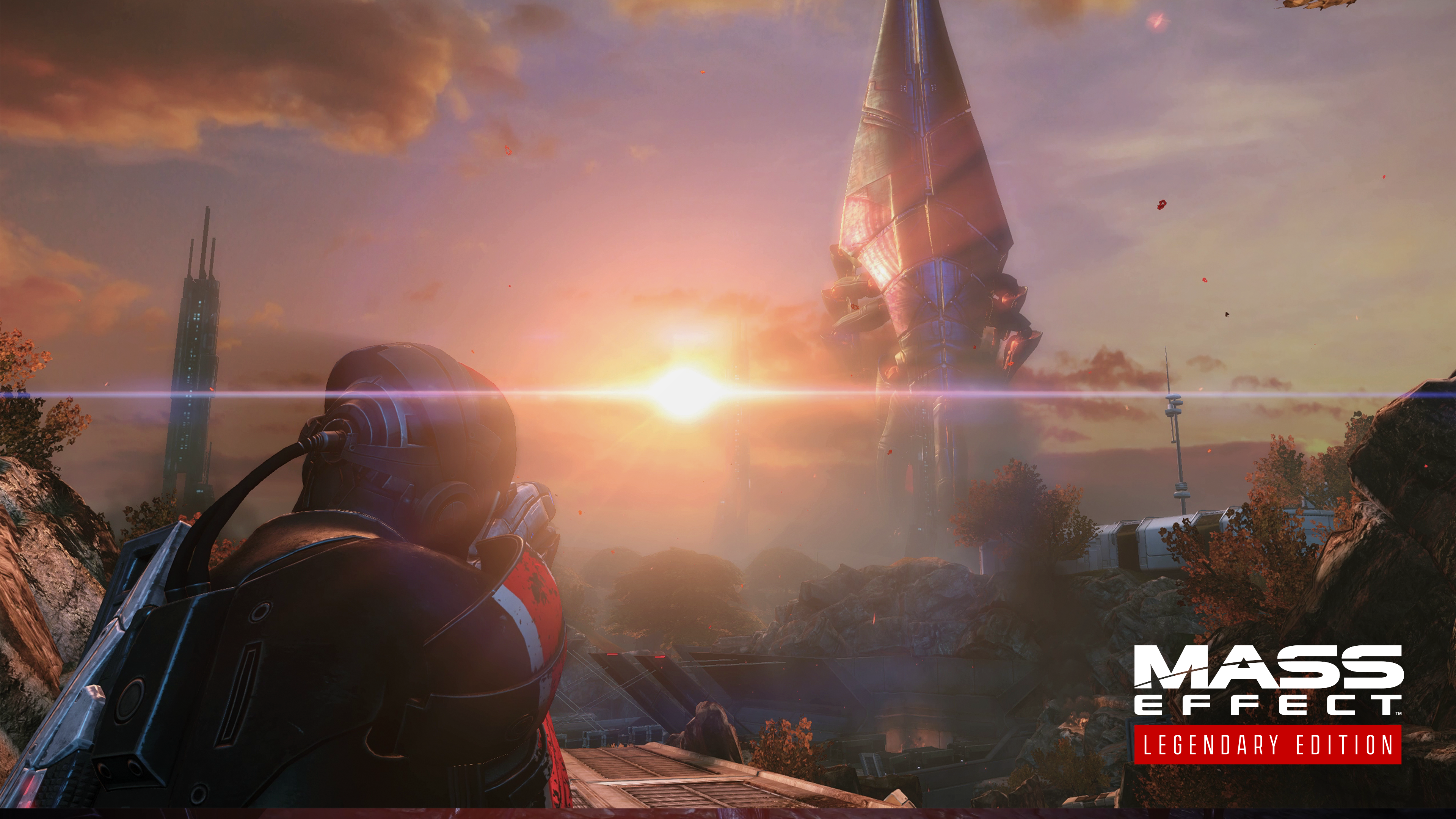Mass Effect Legendary Edition: release date, all the new details, and everything we know

Bioware's certainly offering a lot of Mass for the money.
Bioware has revealed more on the imminent Mass Effect Legendary Edition, which was announced in November for a 2021 release on PC. Several of the project's leads recently gave a livestreamed presentation showing the game, discussing new features, visual improvements, and the reasons behind certain decisions about the remaster.
What's the Mass Effect Legendary Edition release date?
Mass Effect Legendary Edition will launch on May 14, 2021 on both Origin and Steam.
What's in the Legendary Edition?
Mass Effect Legendary Edition will include the original trilogy remastered plus "over 40 DLC including all story content, promo weapons, armors and packs available from the start." The game has a unified front-end, which is to say a menu screen where you choose between the three games, and of course your progress and decisions carry over into the sequels as they always did.
The three games are visually remastered for 4K, HDR, and DX11, with "tens of thousands" of up-ressed textures, enhanced models, lighting, shaders and VFX. It will support high refresh rate and ultra-wide (21:9) displays on PC. There are also improvements to depth-of-field, anti-aliasing, and an "unleashed"—which one presumes means unlocked—framerate on PC.
There's a universal character creator across the trilogy with "a lot" more customisation options, and unified settings options across the three titles on PC (for some reason, each entry in the original trilogy had different settings).
Probably the greatest relief in Bioware's demo was when a lift ride was shown on the PC version. This was in the Citadel, and ME: LE took 14 seconds to load the area where the original game took 52 seconds.

Is it a remake, or a remaster?
Erm... it's complicated. The original Mass Effect game has received a more substantial touching-up than Mass Effect 2 and 3, primarily around the combat system and UI. This makes sense, as the first game was more of an RPG and the sequels greatly improved the combat: so Mass Effect 1 is receiving something of a rework.
The game's UI and various interfaces have been overhauled, and combat and exploration brought in-line with the sequels' improvements: better aiming, squad controls, team AI, and camera positioning. On the last point, for example, you'd commonly take cover in that game and get a brief view of the interior of Shepard's skull: no more. Finally, and perhaps most-wanted of all, the handling of the Tonka-like Mako surface vehicle has been overhauled. I always hated the way this thing drove, so good news.
That aside, there will be no big changes to the adventure itself. At one point there were discussions about pursuing a more ambitious route, technologically speaking, but that would have put Bioware in a position where, essentially, the games were being rebuilt from scratch.
"One of the first questions is, if we're remastering this, what does that look like, and what does it mean to us," says Mac Walters, Mass Effect Legendary Edition's project director and a longtime Bioware developer. "It quickly became this archaelogical discovery, pulling things out [...] one of the jokes I'd make, we'd talk about restoring a beautiful beloved car, but then it quickly turned into sure, if that car was buried in cement, and every time you tried to clear off some of the cement you were worried about dinging the paint or ripping off a mirror..."
"Quite early we spoke to people and Epic and asked what would this look like if we took it into Unreal Engine 4, and it quickly became clear that that jump would really change fundamentally what the trilogy was, and how it felt, how it played. An example would be the Unreal Engine 3 scripting language Kismet, there's no copy-paste equivalent to that, so every moment, every scene would essentially have to be redone from scratch and we'd take away the essence of what the trilogy was. So what this was about was fidelity, taking off some of the edges people would expect."
As for changes to the narrative and character interactions, Walters says "we considered things like story and character but that's so much a part of your experience and memory of this that we took that off the table pretty quick."
What about Mass Effect 3's multiplayer mode?
Nope. "We looked at what it would take to do that," says Mac Walters, project director. "What do we do with cross-play, what do we do with people playing multiplayer now, how do we honor that, bring them in, bridge that gap, and of course these aren't insurmountable challenges [...] but when you looked at the amount of effort that it was gonna take to do that, it was easily commensurate if not greater than for example uplifting all of ME1."
"And I think our focus really was on the singleplayer experience and at some point we had to just draw the line... there was a lot of, I love ME3 multiplayer, like I say people are still playing it today, but ultimately I think the product, the overall ME: LE is a better representation of the original trilogy because we're able to focus on those singleplayer elements."

What about cut content?
"No there isn't any [additional content]," says Walters. "Though at the same time when you look at all the work done [...] I feel that entire first game feels fresh and new."
"We had looked at whether there was stuff on the cutting room floor we could bring in, and a lot of times that isn't really in a state where you can just, y'know, resurrect it and use it. You're rebuilding it from scratch, and at that point you're diverting actual effort from the remastering of everything else... so decisions have to be made along those lines."
On that note, the ending of the trilogy will remain that of Mass Effect 3: Extended Cut, something of a controversial topic at the time: fan reaction to the 'original' ending was so vociferous that Bioware was seen by some as having capitulated to the mob by changing things.
"The Extended Cut will be the experience for everyone playing ME: LE," says Walters. "To me the Extended Cut was really that opportunity to add a little more love, a little more context around the ending, so to me that's canon."
How much better-looking are we talking?

The development of Mass Effect Legendary Edition's look began with AI upscaling before the art team then began to look at the assets and add the human touch. "We knew we wanted to increase the resolution on all the textures across the trilogy," says Kevin Meek, environment and character director, "so like all the VFX, UI, environment art, character art, every single texture, we hit right away with two main changes: first we increased the caps that engine places on the texture sizes, second we ran all of the original uncompressed source art through an AI up-res program, along with some custom batch tools [...] resolutions increased at least to four times if not 16 times, potentially, if they had been previously authored at a higher resolution."
After this the team began targeting improvements manually, using the blindingly simple tactic of making artists play through the levels normally (as opposed to using an editor), and made the call as to what was important to focus on in any given area.
Meek showed what he called a 'baseline' video that had previously been used as an internal presentation, demonstrating realtime reflections, much-improved surfaces on things like eyes, the enormous improvements to NPC textures, and so on. Unfortunately these 4K textures were being demonstrated on a 1080p stream but, that caveat aside, the differences between the older Garrus model, for example, and the shiny new one leap out: the lines on his face are deeper, the damage to his armour craters more into the material, his holo-eye's reflections are more 'realistic.'
The game being on UE3 precludes tech like ray-tracing, but what was that about realtime reflections? "Sticking with Unreal 3 there's a whole different branch of opportunity because it's such an old engine," says Meek. "It's called forward rendering rather than deferred rendering, it opens up this opportunity for us where we can actually just render the scene twice, and what we've done is if in ME1, 2 or 3 if there's a really reflective surface and the performance supports it we can actually add a second camera to the world, and render a texture reflection on surfaces, so you will see realtime dynamic reflections [...] it does everything we need it to do quality-wise without us having to deep-down fundamentally change rendering threads and stuff like that."
Meek went on to discuss getting deep into rock textures, which I'll spare you. One last tidbit is that, once the team had made basic improvements, the art director of the original trilogy, Derek Watts, was roped-in to help reach the LE's final look.

Character customisation
Kevin Meek spoke briefly about one of the trilogy's missteps, the late introduction of a default or what Bioware calls the 'iconic' look for female Shepard in Mass Effect 3 (players who had created their own FemShep in the first two games were given the option to continue with that, or change to the new look). The LE introduces this default FemShep from the start of the trilogy, should players wish to use that model, alongside a raft of improvements to the character model's details.
In addition, the character customisation options have been expanded with more hair, makeup and skin tone options, and persist across all three titles. Perhaps most useful is that it retains the character code functionality of the original trilogy, so players can look up pre-built characters easily.

Bioware calls it a 'passion project'
Ever since the double-whammy of Mass Effect: Andromeda and Anthem, some have lost faith in Bioware. People openly say that the studio isn't what it once was, with too many key players having long-since moved on.
That kind of context seemed to underlie some of this presentation, with the various Bioware developers ensuring their bona-fides were clear. "I've been at Bioware since we were shipping KOTOR back in the day," began Mac Walters. "I didn't do much on there but I did go on to work on Jade Empire, but then in 2005 moved onto Mass Effect and honestly, except for a short stint at the beginning of Anthem and the end of Anthem, I have been all Mass Effect all the time since 2005."
"Fans have been asking for a remaster for some time. This is as exciting for someone like me as it is for our fans, when we develop a game there's always this moment of letting go," continues Walters. "The unique thing about the franchise was we could take all that developer angst and put it in the next game, then the next game [and] the opportunity now to go back with all of those lessons learned, and all the advancements and stuff we saw in the trilogy... first of all it's a dream, but ultimately it's just been a huge passion project as well. You don't get the chance to revisit a lot of these things."
